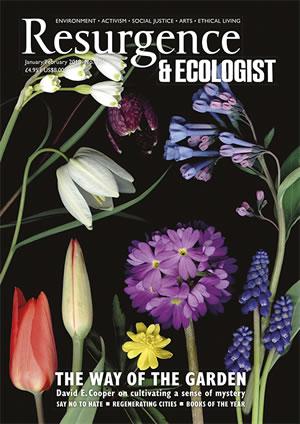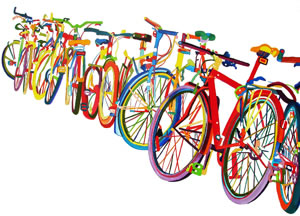Gazing at the front cover of Carlton Reid’s Bike Boom, with its portrait of bike protesters triumphantly waving their fists in the air, you’d be forgiven for thinking this is a celebratory homage to pedal power’s victory in the motor age: a reaffirmation of what we are often told is an unprecedented time in the history of cycling. “Cycling is booming” is a phrase often heard in news stories, trotted out by politicians.
But is cycling really experiencing a boom? In the 1930s and 1940s bicycles dominated British streets, peaking in 1949, when cyclists made up 37% of all journeys. Since then, however, cycling has been in almost terminal decline, and now constitutes just 2% of all journeys in the UK, a level that has remained unchanged for decades. Largely a historical account of cycling’s fall from grace in the UK, US and Europe, Bike Boom is therefore less a tale of resurgence and more an example of history repeating itself: what’s striking is the similarity of the arguments over the decades, and the degree to which ‘revolutions’ are sometimes exercises in incrementalism.
It is true that recent years have seen renewed interest in the bicycle in the UK, both as a practical tool for making short trips and as a competitive sport, epitomised by steadily growing interest in big name events such as the Tour de France and the growing number of long-distance amateur events across the UK. But stand on a street corner in any UK town or city, and you are unlikely to see much evidence that cycling has made any sort of mark on the streetscape.
This is the result of a variety of factors, as Reid explains. Most of these are down to political animosity towards the bicycle, as decision makers prepared to reorient towns and cities around the needs of the car, particularly in the post-war years. Cycling, much as it is now, was neglected and ridiculed, and scant attention was paid to cyclists’ needs. The car was rapidly seen as an emblem of progress, technological advancement and human ingenuity, and the bicycle was therefore a major obstacle. Although the UK’s authorities experimented with the idea of separate cycle tracks, the quality was poor, and the tracks were seen as a mechanism for clearing the roads of a two-wheeled nuisance. Nonetheless, it may surprise some to know that at one stage the UK authorities considered implementing a dense, Dutch-style network of cycle tracks, some isolated examples of which survive to this day.
In places outside the UK, opposition to cycling was equally vehement, but small kernels of cycling culture grew, either down to the economic circumstances of the time (such as the OPEC oil embargo of 1973, which affected the Netherlands more than any other European country), determined protest and advocacy, the maladies of a particular US president (when Eisenhower’s doctor prescribed cycling to treat heart problems) or sometimes even just downright luck (as in the small city of Davis, California, which has nurtured a strong cycling culture due to its high student population and the dogged determination of a pro-cycling university chancellor and his fellow professors in the 1960s). All of this goes to show that cycling cultures are inherently fragile entities, often shaped by forces beyond any individual’s control.
But history, as Reid says, is not a lesson, but a template. And there is much we can do to nurture cycling cultures, not least by investing in high-quality infrastructure. In a world where more than a million people die each year in motor vehicle accidents, where diseases linked to inactivity and sedentary lifestyles contribute to the death of millions, and where vehicle pollution, congestion and noise blight the world’s towns and cities, the bicycle remains one of the most useful and effective tools we have to both tackle disease and improve our quality of life. As this book demonstrates in sharp and illuminating detail, the world needs the bicycle now more than ever.







